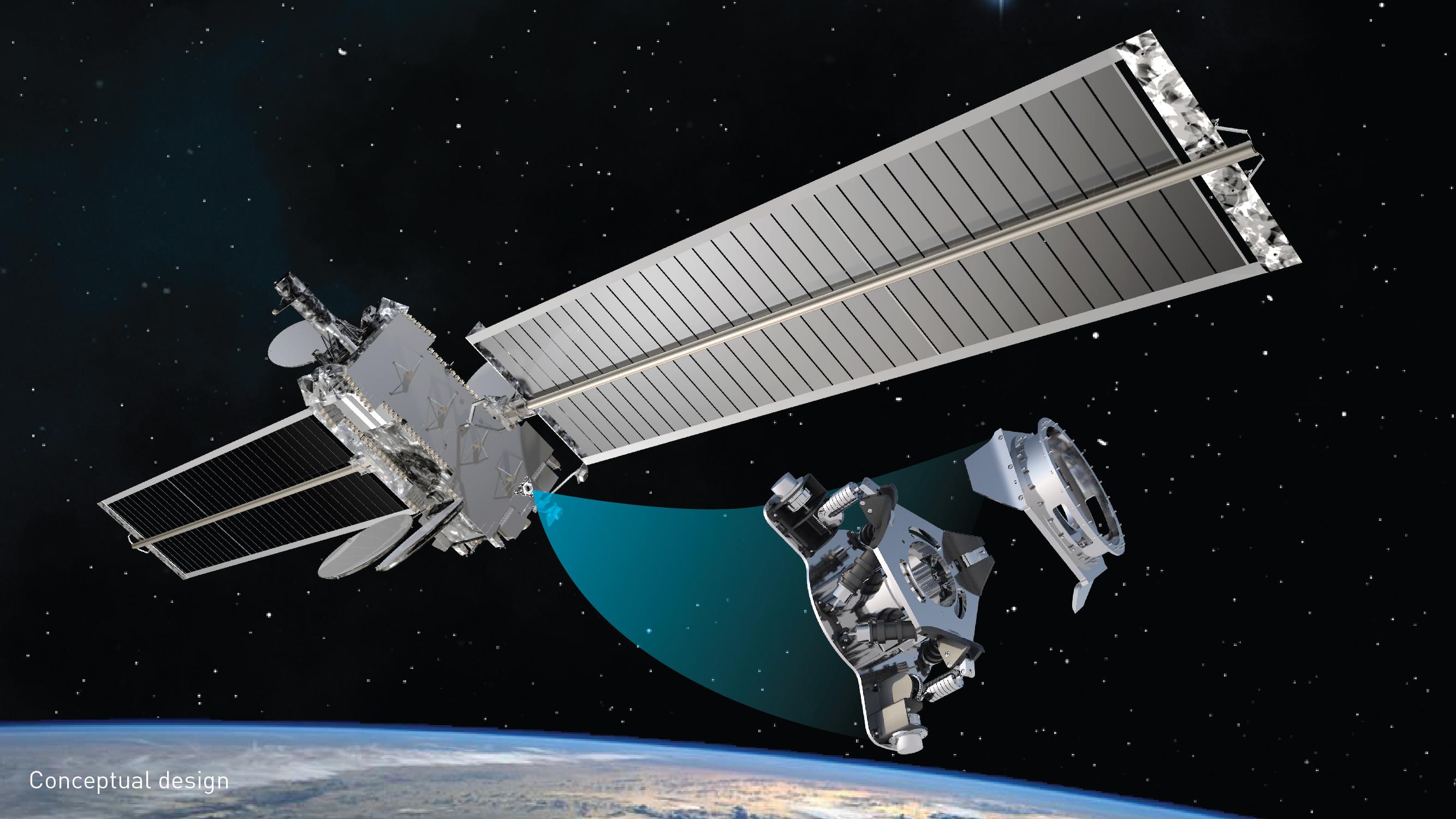
Lockheed Martin on April 4 released online an open-source interface standard for on-orbit satellite docking.
The Mission Augmentation Port, a mechanical interface design that the company calls “nonproprietary,” is an attempt to establish an industry-wide standard that would allow on-orbit servicing or mission augmentation companies to connect to a wide variety of satellites quickly and easily.
“Just like USB was designed to standardize computer connections, these documents are designed to standardize how spacecraft connect to each other on orbit,” says Paul Pelley, senior director of advanced programs at Lockheed Martin Space. “We believe it’s in the best interest of the nation for the industry to have common interface standards to provide mission agility and enterprise interoperability.”
Lockheed Martin’s Augmentation System Port Interface (ASPIN) was designed in compliance with the standard. ASPIN is a docking adapter included in Lockheed Martin’s baseline LM 2100 Combat Bus, the basis for the U.S. Space Force’s Space Based Infrared System Geosynchronous satellite 5.
ASPIN could allow an operator to upgrade a satellite with new processors, storage and sensors. It might also allow the operator to replace or retrofit components after launch, Lockheed Martin says. It may also support future refueling interfaces, the company said.
Manufacturers interested in incorporating the Mission Augmentation Port into their space vehicles can download documents describing the standard from Lockheed Martin’s website.
“The data released by Lockheed Martin can be used by designers to develop their own [Mission Augmentation Port]-compliant docking adapters that will—barring some required discussion between servicers and hosts to coordinate missions—permit interoperability of docking satellites,” the company says. “Specifically, the documents released contain the information required for a compliant physical mate of docking port halves, such as the dimensions of plates and petals. While determined to be application specific, suggestions for electrical interfaces and docking profiles are included.”
Lockheed Martin and others, such as Northrop Grumman’s SpaceLogistics, see the nascent on-orbit service market as a potential way to more rapidly upgrade satellites while also extending the platforms’ longevity.
“Ultimately, our goal is to drive the development of a new ecosystem where a platform’s function can change at the pace of technology,” Pelley says. “This ecosystem will be made up of [satellite augmentation vehicle] providers, payload manufacturers, and others who will benefit from the on-orbit augmentation infrastructure.”





